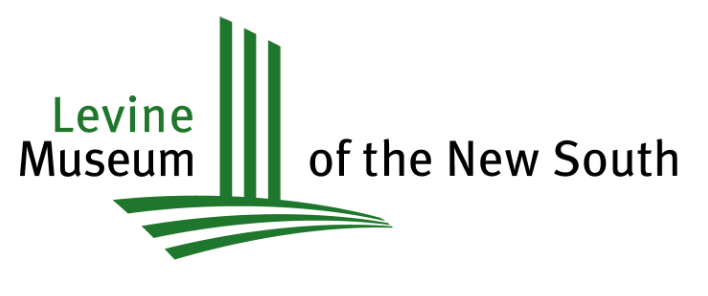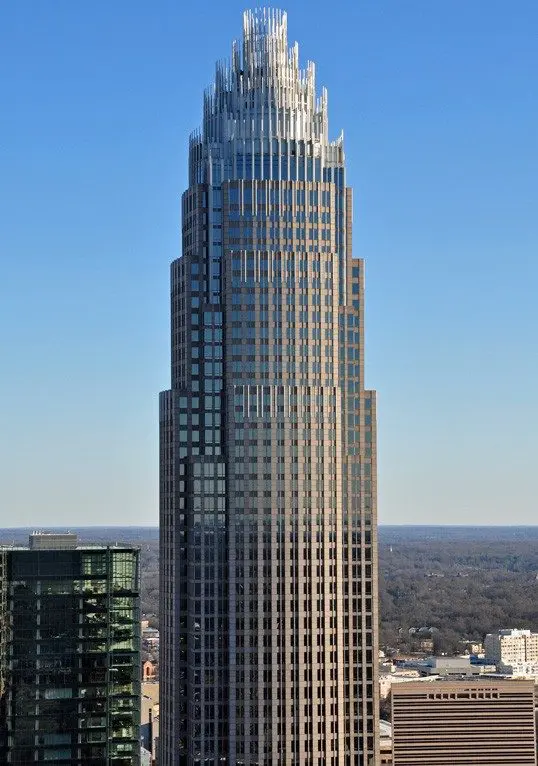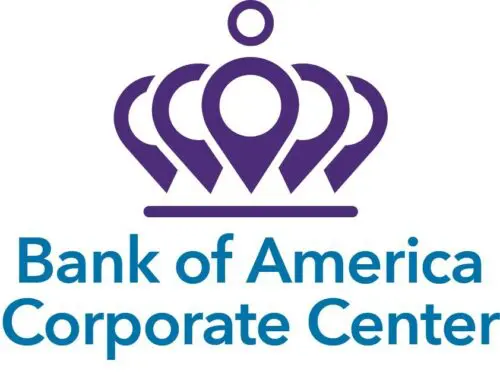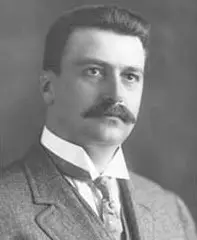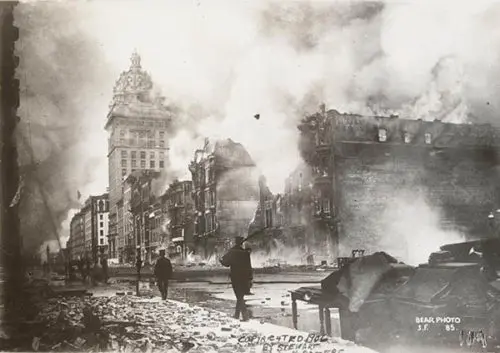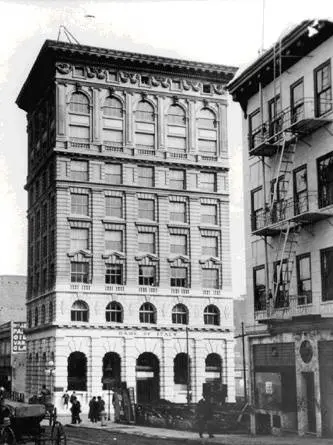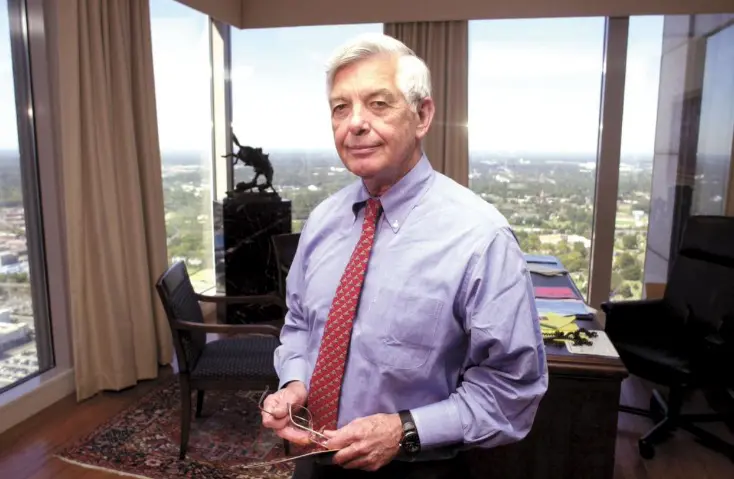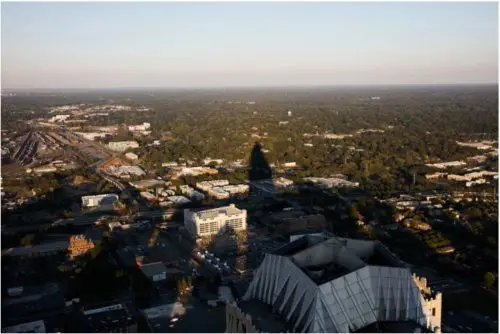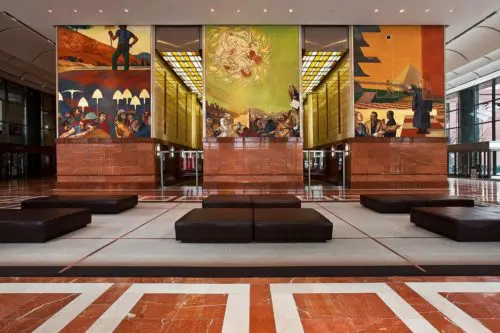Charlotte has become well-known as a business center because of its deep connections to the banking industry. Uptown Charlotte is home to the headquarters of Bank of America at 100 N. Tryon Street. What’s the story of the world’s second-largest bank and its building, sometimes locally known as “the Taj McColl?”
The Bank of America is a patchwork of banking institutions throughout the East and West Coast and Central United States. Bank of America first began as the Bank of Italy in San Francisco. The Bank of Italy was founded by Amadeo Peter (A.P.) Giannini, the son of Italian immigrants. He began his career selling fruits and vegetables from a wagon. In 1904, at 34, he launched a small bank in the Italian neighborhood of North Beach, San Francisco.
At the time, larger banks only lent money to large businesses and worked with the wealthy. Giannini had a different strategy; he knocked on doors and asked people on the streets. He persuaded immigrants who did not typically use banks that their gold and silver were safer at his bank than under mattresses.
In 1906, a massive earthquake hit San Francisco, causing fires. The fires burned down the larger banks and superheated their vaults, meaning vaults could not be opened without burning the cash paper records within. Giannini saved $80,000 worth of coins from his vault and made it out of town.
He then created a makeshift bank in North Beach an Italian neighborhood in San Francisco. He began extending loans to people on handshake deals; those deals helped revive and rebuild the city. He welcomed small-time borrowers who typically could not get loans from larger banking institutions. He also targeted farmers, explaining that bank branches make credit cheaper and more reliable.
Giannini built the first statewide branch banking system in the country. The Bank of Italy merged with Bank of America, Los Angeles in 1928. Two years later, the name was changed to Bank of America. By the time Giannini passed away in 1949, there were more than 500 branches, with the banking institution having $6 billion in assets. In 1956, BankAmerica Corporation was established as the company that operated and owned Bank of America.
The central portion of the bank came from Bank of America’s acquisition of Continental Illinois National Bank and Trust Company in 1994. On the East Coast, Bank of America traces its origins back to 1784 when Massachusetts Bank was one of the nation’s oldest bank charters. After a series of mergers, Massachusetts Bank became Fleet Boston, acquired by Bank of America in 2004.
In 1874, Commercial Nation Bank was formed here in Charlotte; through a series of mergers, it became the North Carolina National Bank (NCNB). Hugh McColl, Jr. was a fourth-generation banker who joined NCNB in 1959 and became president of NCNB in 1974. McColl became CEO of NCNB in 1983. In 1991, NCNB merged with two Southern regional banks, becoming NationsBank.
McColl oversaw the merger of the BankAmerica Corporation and Nations Bank in 1998. According to Falfurrias Capital, during McColl’s tenure, the bank grew from “$12 billion in assets in 1983 to over $642 billion, $364 billion in deposits, and $48 billion in shareholders by the time he retired in 2001.”
McColl commissioned the Bank of America Corporate Center at 100 North Tryon Street. Construction started in 1989, and the skyscraper opened in 1992. The Corporate Center’s construction spurred an influx of Latinx immigration to the Queen City. When Bank of America moved its corporate headquarters to the city in 1992, it hired a Houston, Texas–based construction company to build the Corporate Center. The construction company didn’t realize that Charlotte did not have the necessary workforce of construction workers, electricians, plumbers, and other workers to complete the job. So, the Houston-based company began recruiting along the Rio Grande border. As word spread amongst the Latinx community, people began to immigrate to Charlotte, and many people chose to stay after the work was completed.
The Corporate Center is roughly 871 feet tall, with 60 floors and is Queen City’s tallest building. The Corporate Center is sometimes referred to as the “Taj McColl.” The Corporate Center lobby is home to three frescoes designed by North Carolina artist Ben Long. The subject of the frescoes was left up to Long. The three frescoes are separate but are related. Long was fascinated with Shingon, a Buddhist philosophy that focuses on the belief in three attributes of humanity: body, speech, and mind. Long chose three themes: chaos/creativity, planning/knowledge, and mind/knowledge. Each of the frescoes is roughly 18 feet by 23 feet.
Charlotte has become a world-class financial center and much of that success, as well as the city’s growth, can be attributed to Bank of America and its leadership. Bank of America also employs over 16,000 people in Charlotte alone. Today it is one of the most charitable organizations in Charlotte, donating money to a wide variety of organizations and causes like affordable housing, neighborhood revitalization, and healthcare access.
